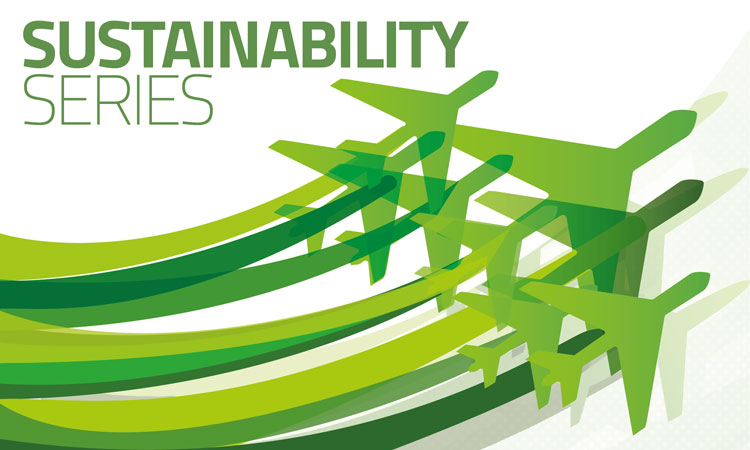Sustainability Series: Stuttgart’s mission to melt down carbon
- Like
- Digg
- Del
- Tumblr
- VKontakte
- Buffer
- Love This
- Odnoklassniki
- Meneame
- Blogger
- Amazon
- Yahoo Mail
- Gmail
- AOL
- Newsvine
- HackerNews
- Evernote
- MySpace
- Mail.ru
- Viadeo
- Line
- Comments
- Yummly
- SMS
- Viber
- Telegram
- Subscribe
- Skype
- Facebook Messenger
- Kakao
- LiveJournal
- Yammer
- Edgar
- Fintel
- Mix
- Instapaper
- Copy Link
Posted: 26 April 2019 | Cornel Ritter, Ina Mangold, Peter Nowak | No comments yet
For the Sustainability Series this week we delve into the realms of winter operations as de-icing fluids can put natural resources at risk as they increase the carbon content in water. Stuttgart Airport maintains an intelligent sewage system consisting of 250km of tubes and water treatment basins with environmentally-responsible management.


Each year, over 11 million passengers arrive and depart from Stuttgart Airport. With more than 55 airlines to choose from, passengers can fly to over 100 destinations. Located in one of Europe’s strongest economic regions, the airport is a major provider of mobility for people and businesses in Baden-Wuerttemberg. At the same time, airport management takes responsibility for its neighbours and environment very seriously. Stuttgart Airport aims to become one of the best-performing and sustainable airports in Europe – the fairport STR.
Besides the environmental effects, one of the main challenges in the de-icing process is time. Efficient processes help to avoid delays and in Stuttgart, aircraft covered in ice or snow stop at one of four designated pads on their way to the runway. These strategically-located zones are the first step to secure the environmentally-friendly handling of de-icing water. Two contracted providers, the airport operator’s subsidiary Stuttgart Airport Ground Handling (SAG) and Lufthansa Technik, carry out the procedure. They ensure that all vehicles are ready to be used on the assigned zones at the scheduled time. This workflow permits taxiing to the runway within 10 minutes.
Haste but no waste
Stuttgart Airport developed a sewage system according to their needs: De-icing water from the aircraft shower zones flows directly into drains where high-end electronic measuring points collect data. The interconnected sensors send the data to a central control system. “Environmental protection has a long tradition at Stuttgart Airport,” explained civil engineer Cornel Ritter – Wastewater Manager at Stuttgart Airport for more than a decade. During the last 20 years, the airport has spent over €150 million in modern infrastructure and technology to protect the water quality on the airport’s ground and its surroundings. Investments like these are based upon the fairport STR idea. It provides Stuttgart Airport’s mission to become one of the best-performing and most sustainable airports in Europe.
Bio-degradable agents against ice
The ground handling teams at Stuttgart Airport are equipped with 16 modern Vestergaard elephant vehicles with 12m-long telescoping spray booms. They store different de-icing fluids in two separate tanks. The amount and type of liquid agent used depends on local weather conditions – so do residues on the ground after an operation. “The main reasons for choosing a suitable fluid are safety aspects. However, we also understand it as our responsibility to find and choose the ecologically best alternative,” said Peter Nowak, Head of De-icing and Environmental Coordinator at SAG.
The liquids used contain the least possible total organic carbon (TOC). In addition, Stuttgart Airport charges de-icing fees depending on the level of TOC. This sets an incentive for airlines to not apply more of the agent than necessary. Ground handlers at Stuttgart Airport use a highly bio-degradable propylene-glycol-mixture, which is basically a water-alcohol-cocktail. The concentration level depends on the current weather situation. Some mixtures are sprayed in conditions without any precipitation and thinned down with water, other types add a protective layer on the aircraft.
Water treatment on the spot
In order to sustain a high standard in water management, the airport modernised the monitoring equipment in 2017 and built an additional construction to check TOC data more frequently. A certified wastewater laboratory at the airport examines samples regularly. “We constantly measure the amount of TOC in our sewage to clean the wastewater adequately,” said Ritter.
The TOC level determines the need of further treatment. When water contains only a low TOC value, it is purified at the airport’s local combined treatment and retention basin. If the TOC level is very high, it flows into one of eight purpose-built tanks; each able to hold 30,000 litres. The water in the tanks is pumped out and delivered to a nearby purification plant with special suction vehicles. In strong winters, the tanks are emptied up to 200 times.
Although the sewage leading to the combined treatment and retention basin contains a low degree of pollution, the water will be treated in a so-called moving bed biological reactor to reduce the TOC level: 6.5 million plastic cores – resembling hair rollers – transport bacteria that generate a biofilm and convert the TOC into CO2.
Synergy with municipal sewage plants
Finally, the water is led to another cleaning entity, a dissolving air flotation unit. The result is a reduction of carbon by up to 90 per cent. Accruing sludge, a biological by-product produced in the moving bed reactor, is compressed and eliminated. “After this two-step cleaning method, the result is well-manageable for municipal sewage plants. Indeed, they even appreciate the waste product coming from the airport,” said Ritter. The remains are valuable: The sludge is used to produce energy.
Not all possible components of de-icing water are useful: Surfactant or other bio-chemical components do not always go along with regular cleaning routines in municipal sewage plants and can cause problems. To avoid difficulties in advance, the central laboratory of Stuttgart’s Legal Department of Sewage inspects and approves every de-icing fluid before it can be applied on an aircraft at the airport.
High aims
Operators, external partners and the airport itself check every step in the workflow to keep de-icing as environmentally compatible as possible. By testing fluids, using eco-friendly agents and monitoring the sewage treatment constantly, Stuttgart Airport is working on its self-set fairport STR mission: Becoming one of the best-performing and most sustainable airports in Europe.
Facts and figures
The level of pollution in sewage water from de-icing operations is based on the total organic carbon (TOC) contained. A 250km underground tube system carries the water to its destination. Inside the drains, 12 online processor stations constantly measure the TOC value. Depending on this measurement and its source, the sewage is separated in individual compartments where it receives an adequate treatment. In 2017, 539,484,000 litres of aircraft and ground de-icing effluents were cleaned at Stuttgart Airport.
Biographies






Related topics
Airside operations, Emissions, Runways and pavements, Sustainability, Sustainable development, Terminal operations, Winter operations


















